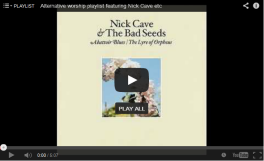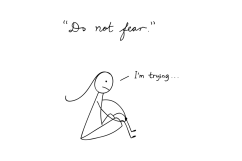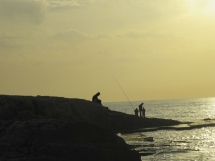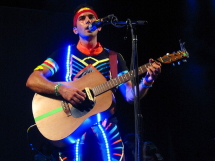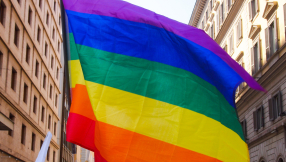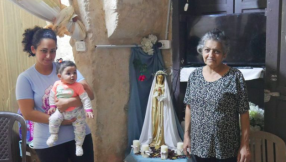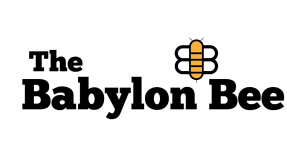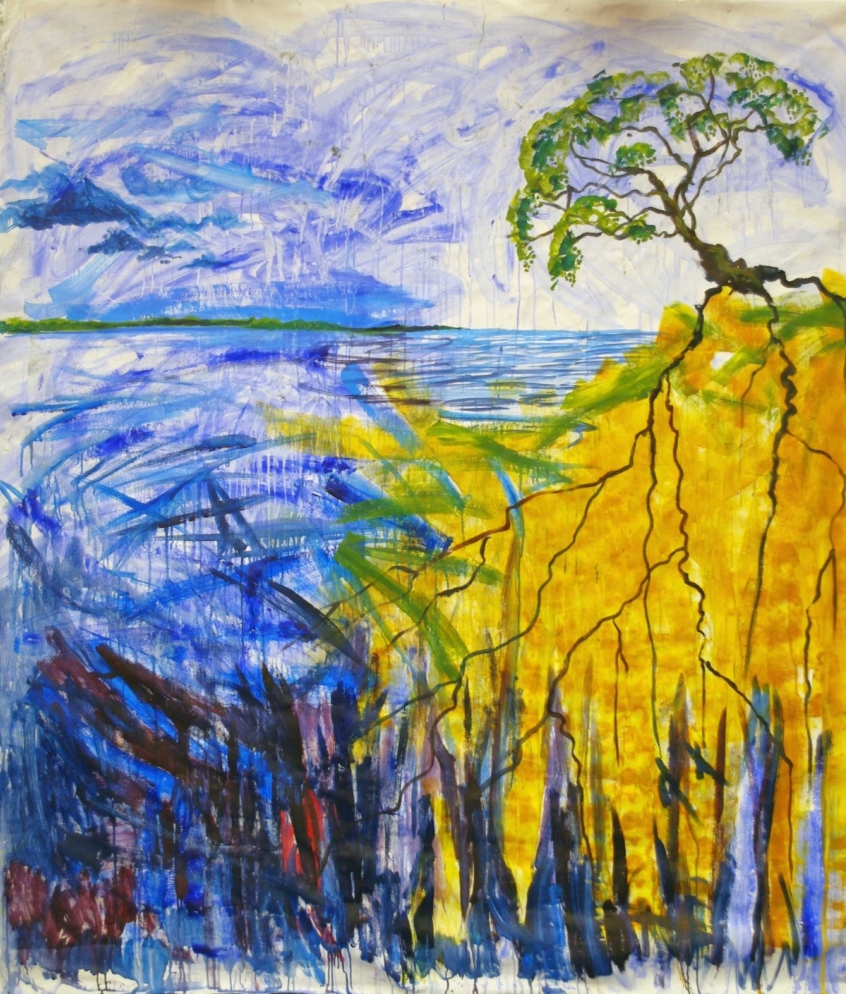
Christian art is not the pioneering thing it was in the days of Michelangelo. Rather than embracing new techniques, and being celebrated far and wide, it's become synonymous with fridge magnets and postcards, usually the sort found in niche Christian stores.
"Art in Christian culture is where music was in the 70s," says professional artist Deborah Last. "While Christian music has developed, and become more technically interesting and versatile, "the arts are perhaps still in the 'Kumbaya my Lord' phase."
Last has spent the week standing at the front of a room of thousands of people, paintbrush in hand. While they're slouching in their seats, she's hard at work. It's a pretty vulnerable place to be as she creates her "visual sermons" that accompany the evening talks at Spring Harvest.
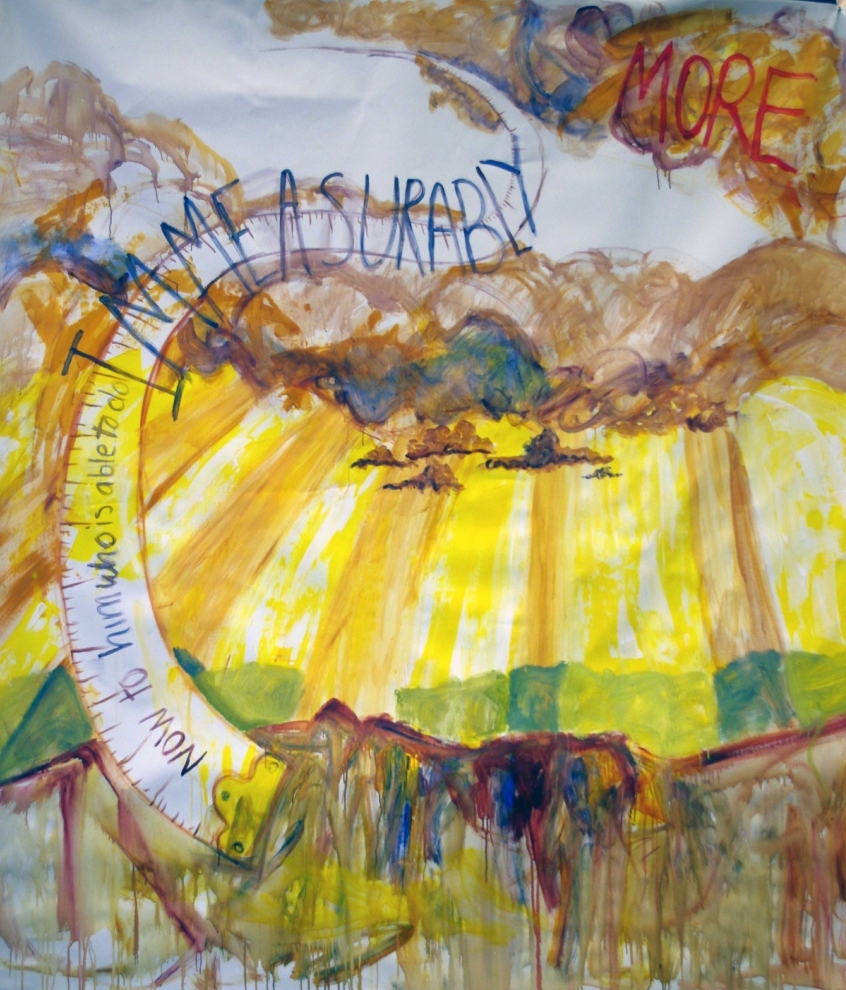
"You can't separate me as a Christian and what I produce, when it's overtly Christian or when it isn't," says Last. "I don't think Christian artists should always paint stuff that has an overt Christian message, but sometimes you can't help it and it spills out."
What she's been doing at Spring Harvest isn't necessarily typical of her day-to-day work, but she says she loves to use her skill as a form of worship.
Last runs a small art school in Buckingham, which she started by holding art classes at her church for people in the local community. She says art is an underrated tool for the church – both in our worship and evangelism. Those first art students who came to her classes church used to call the art lessons 'church' though they never would have thought to step foot in the building on a Sunday morning.
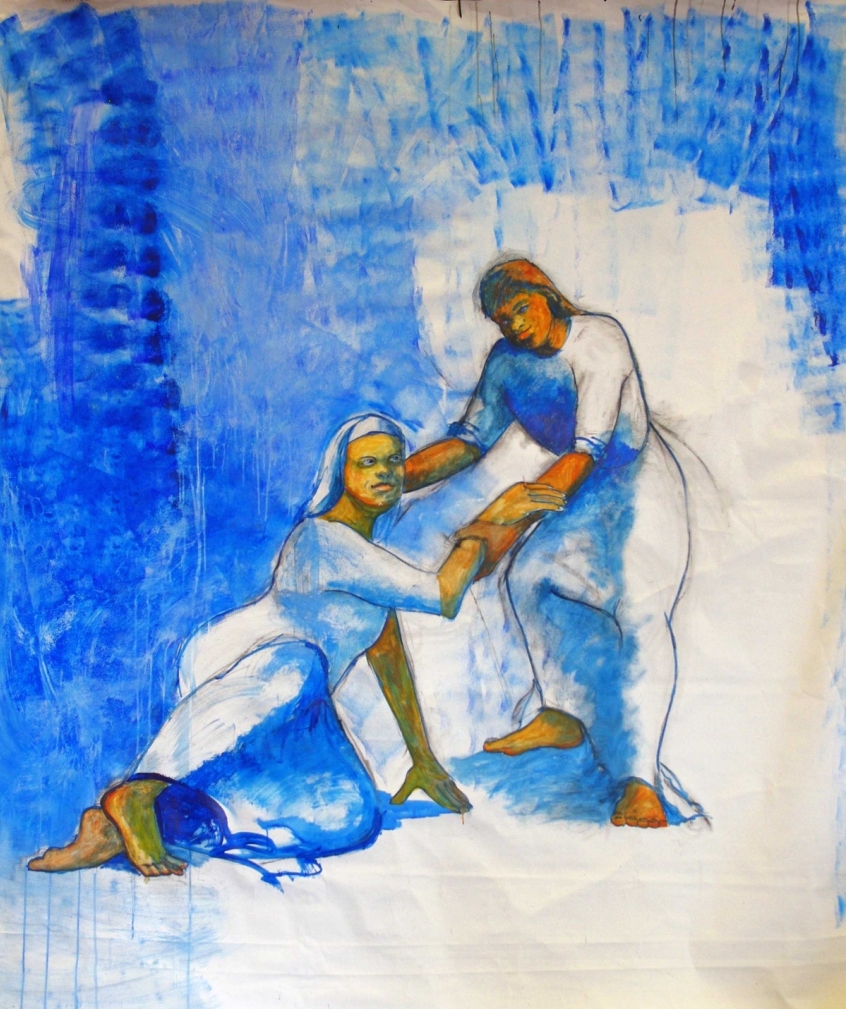
She's passionate about using art to challenge people within the Church too. From the first explicitly 'Christian' painting she was asked to do, aged 18, when she painted five black wise men instead of the usual milky three, to getting Christian women to roll around in paint for an installation piece. Challenging people "is what artists do", she says.
Encouraging the development of the arts among Christians has two dimensions. Firstly championing the production of good art from Christians who are professional artists – art which moves beyond the popular art of "rainbows and smiley Jesuses" as she puts it.
But just as in sung worship, there's also scope to give people who wouldn't usually do art to express themselves and their faith through art. At a workshop yesterday about a hundred people came together to create what could be called a 'holy mess' as they produced an installation piece on the theme of 'deeper' – creating roots out of sugar paper hanging from the ceiling as a way of pushing people beyond the usual tropes and the desire to make things look pretty.
When Last paints during worship, sometimes the picture she has in mind and message people take from it can be very different. She recalls a time when she had an image of a landscape and it turned out to be a very precise depiction of a couple's new hometown – for them the painting served as a confirmation from God that they had moved to the right place.
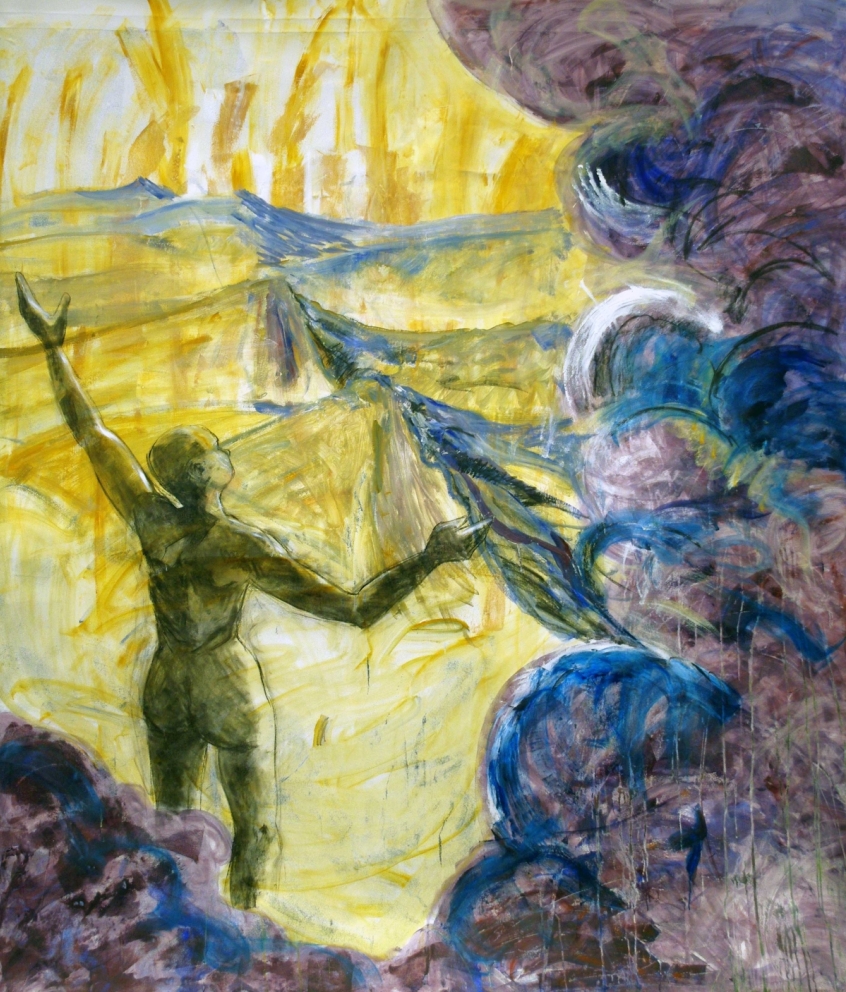
Last recognises there will always be people who don't quite 'get it' and aren't so visually inclined. There are the inevitable comments such as "Well who's he then, that bloke in the picture?" or " Why hasn't he got any clothes on? He's got a bottom!" To which she good-naturedly replies: "Well yes, we all have them", rather than labouring the point about being naked before God.
Nonetheless, Christianity and nudity has become a bit of a theme for her. "We're a bit prudish us Christians. But God made us... Of course it's not appropriate to walk around naked but actually I think God quite likes his design. You only have to look at Rubens and Rembrandt – there's lots of flesh there."
It was something she particularly confronted in an installation she displayed at Spring Harvest last year called Upper Room – 13 canvases of women, painted using their bodies. Christ is represented as the foetus drawn into the womb of one woman on the 13th canvas who was pregnant when the work was made.

"We've made our bodies about sex and my campaign – particularly with Upper Room – is that that is not what God wants us to do. We need to accept that we are bodies and celebrate that."
The production of the work became a kind of therapy for the women she involved – many of them from among her prudish, or embarrassed, Christian friends. The installation has since been displayed in at the Milton Keynes Festival Fringe and at numerous schools and events, partly as a way of talking about self-image and God's image of us.
You can follow Last on Instagram @debs_last. One of her current projects involves creating and posting a painting every day of the scene outside her house and gathering them together to look at the colours of the months.










